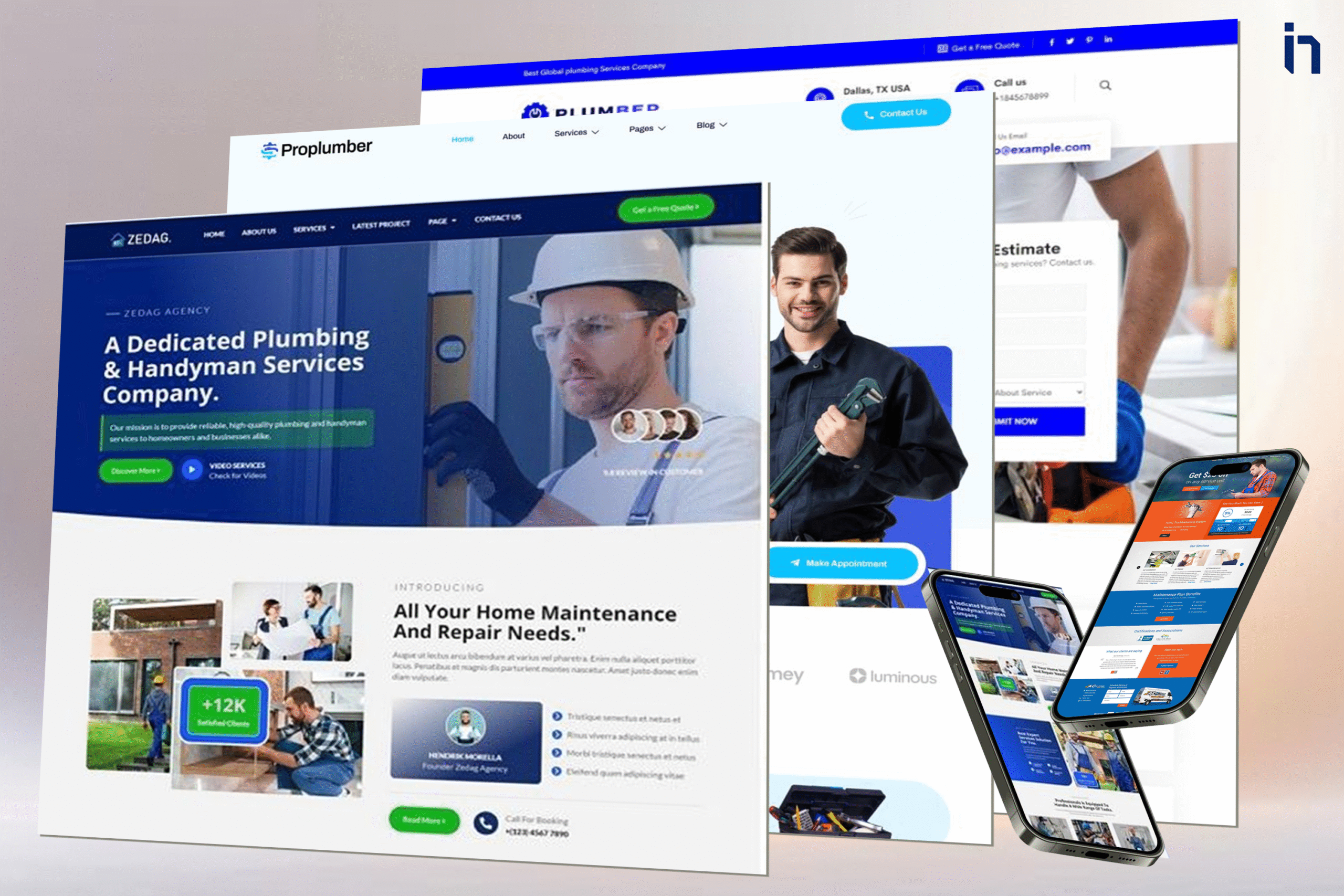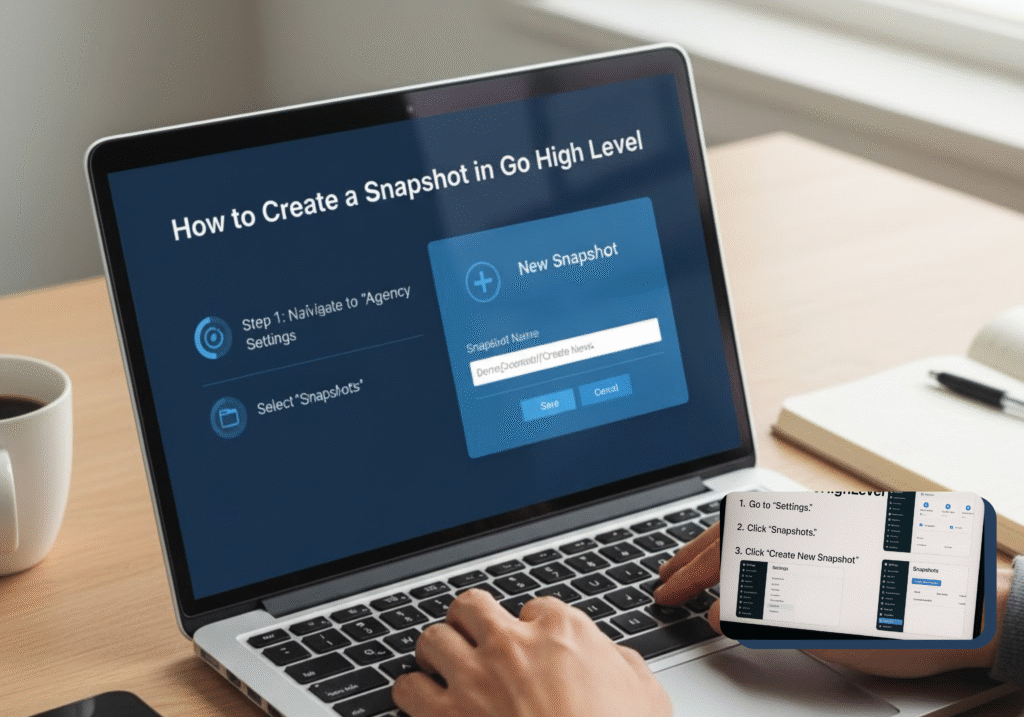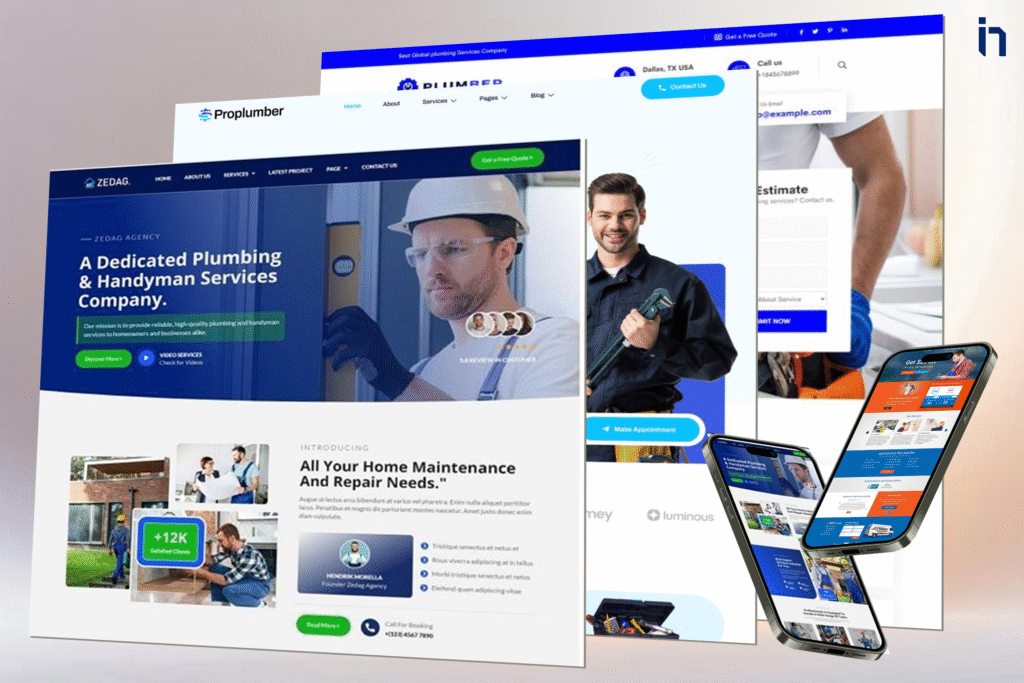Introduction: Why Plumbers Need More Than Just a Website
Imagine this—you’re a homeowner with a burst pipe at midnight. You quickly grab your phone, type “plumber near me,” and click the first result. What do you see?
If the page you land on feels cluttered, confusing, or worse, doesn’t immediately show how to contact the plumber, you’ll hit the back button and move on to the next option.
This is why a plumbing service landing page isn’t just “nice to have”—it’s the difference between winning a customer in an emergency and losing them to a competitor.
Unlike a general plumbing work website that lists everything under the sun, a landing page is laser-focused on converting visitors into calls, bookings, or inquiries. Done right, it builds trust quickly, highlights expertise, and makes it incredibly easy for customers to reach out.
In this article, we’ll dive into why every plumbing business needs a landing page, what elements make it successful, real plumbing website examples, and how to choose the right landing page service provider.
Why a Professional Landing Page is Critical for Plumbing Services
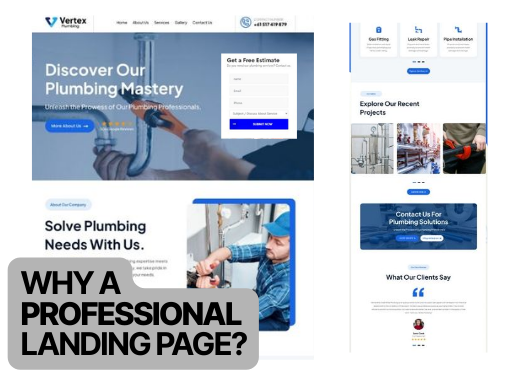
Plumbing is one of those industries where urgency plays a huge role. Customers don’t have time to browse—they need immediate solutions. A landing page tailored to plumbing services helps in three powerful ways:
- Instant Trust – Customers see your contact number, licenses, reviews, and clear services right away.
- Higher Conversions – A focused landing page avoids distractions and guides visitors toward one goal: booking your service.
- Local SEO Boost – Search engines love pages optimized for a specific service + location (e.g., “emergency plumbing service in Dallas”).
Think of your landing page as a digital storefront that works 24/7, answering customer questions before they even pick up the phone.
Key Elements of a High-Converting Plumbing Landing Page
Not all landing pages are created equal. Here are the must-have components that separate a high-performing plumbing service landing page from a generic website.
1. A Clear, Benefit-Driven Headline
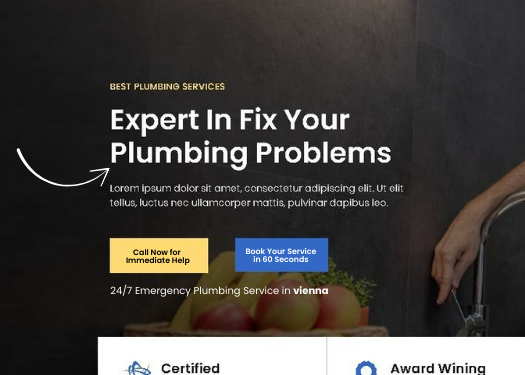
Your headline should immediately communicate what you do and why customers should care. Example:
“24/7 Emergency Plumbing Service in [City] – Fast, Reliable, Guaranteed”
This works better than a vague “Welcome to Our Plumbing Website” because it speaks directly to customer needs.
2. Strong Call-to-Actions (CTAs)
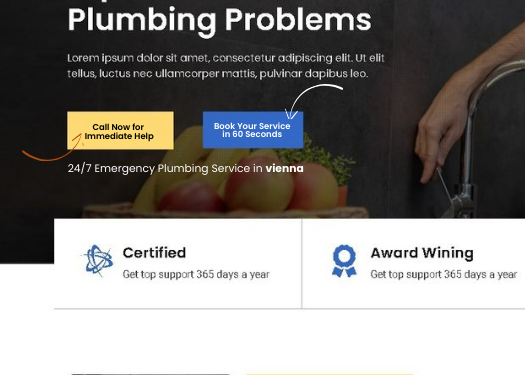
CTAs are the heart of your landing page. Use buttons like:
- “Call Now for Immediate Help”
- “Book Your Service in 60 Seconds”
- “Get a Free Quote Today”
Pro Tip: Keep your phone number clickable for mobile users.
3. Trust Signals and Credentials

Plumbing customers want reassurance. Add:
- Licenses & certifications
- Years in business
- Local service area coverage
- Guarantee badges (e.g., “Satisfaction Guaranteed”)
Trust badges are small but powerful—they show professionalism and help you stand out.
4. Customer Testimonials & Reviews
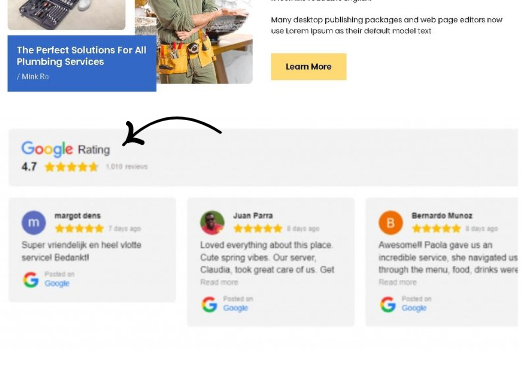
Nothing sells plumbing services better than happy customers. Showcase 2–3 testimonials with photos (if possible). Example:
“I called at 11 PM, and they arrived within 30 minutes. Fixed my burst pipe quickly and charged a fair price. Highly recommend!” – Sarah L., Dallas
5. Service Highlights with Visuals
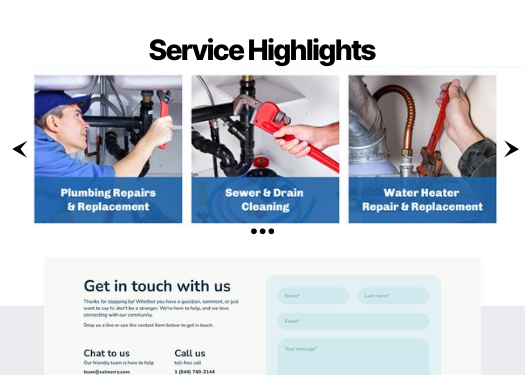
Make it clear what services you provide:
- Pipe repairs
- Leak detection
- Water heater installation
- Drain cleaning
- Emergency plumbing
Use icons or short bullet points to make this digestible.
6. A Quick Contact Form

Keep forms short—Name, Phone, Service Needed is often enough. Don’t overwhelm users with too many fields.
7. Fast-Loading, Mobile-Friendly Design
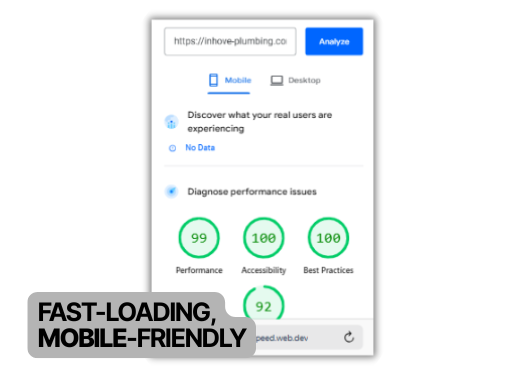
Most customers searching for a plumber are on mobile. If your page loads slowly or looks broken on small screens, you lose leads instantly.
Plumbing Website Examples That Work
Let’s look at a few plumbing website examples (generalized insights):
- Emergency Plumber in Chicago – Their landing page has a bold red “Call Now” button that floats as you scroll. Smart move for urgency.
- Eco-Friendly Plumbing Solutions – This site highlights water-saving installations with visuals, appealing to eco-conscious homeowners.
- Family-Owned Plumbing Service – Features real team photos, giving a personal, trustworthy touch versus stock images.
These examples show that while design varies, the principles remain consistent: clarity, trust, and easy access to services.
Plumbing Work Website vs. General Business Site
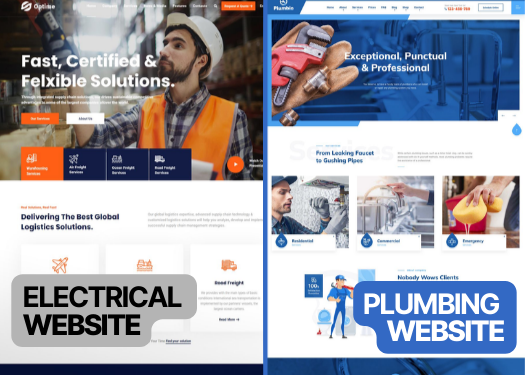
Many plumbers think their general business website is enough. But here’s the key difference:
- Plumbing Work Website (Landing Page Focused): Optimized for conversion, highlighting specific services and making it easy to contact.
- General Business Site: Covers company history, blog posts, maybe multiple services but often lacks urgency-driven design.
Think of your landing page as a specialized tool, not a generic brochure.
Choosing the Right Landing Page Service Provider
Not every business owner can design a landing page from scratch—that’s where a landing page service provider like Inhove.com comes in.
When choosing one, look for:
- Industry experience – Do they understand trades like plumbing, electrical, HVAC?
- Customization – Can they tailor the page to your exact services?
- SEO knowledge – Will they optimize for local searches like “plumber in [city]”?
- Ongoing support – Landing pages need updates for promotions, seasonal offers, or service expansions.
At Inhove.com, we specialize in creating landing pages that are not just pretty but built to convert.
Hybrid Electrical and Plumbing Website Integration
Some businesses offer both electrical and plumbing services. In this case, your landing page should:
- Have separate sections for plumbing vs. electrical
- Use dual CTAs (“Book Plumbing” vs. “Book Electrical”)
- Maintain a clean layout to avoid overwhelming visitors
This hybrid model works great for businesses wanting to capture both service markets without confusing customers.
Choosing the Right Landing Page Service Provider
When creating a plumbing service landing page, avoid shortcuts that hurt credibility.
- Using free or DIY templates – These often look unprofessional and may not be optimized for SEO.
- Cluttered designs – Too much information leads to confusion.
- No clear CTA – If customers don’t know how to reach you, they’ll leave.
- Generic stock photos – Real images of your team build more trust.
Remember, customers are looking for reliability—don’t cut corners that make your business look less credible.
Conclusion: Make Your Plumbing Landing Page Work for You
A plumbing service landing page isn’t just another web page—it’s your 24/7 sales tool. By focusing on clarity, trust, and customer needs, you can turn one-time visitors into long-term clients.
Whether you’re a solo plumber or running a larger electrical and plumbing website, the principles remain the same:Clear headlines
- Strong CTAs
- Trust signals
- Fast, mobile-friendly design
If you’re ready to attract more customers and build a professional online presence, let Inhove.com help you craft a high-converting landing page that sets you apart from the competition.
👉 Contact us today to get started on your custom plumbing service landing page.

